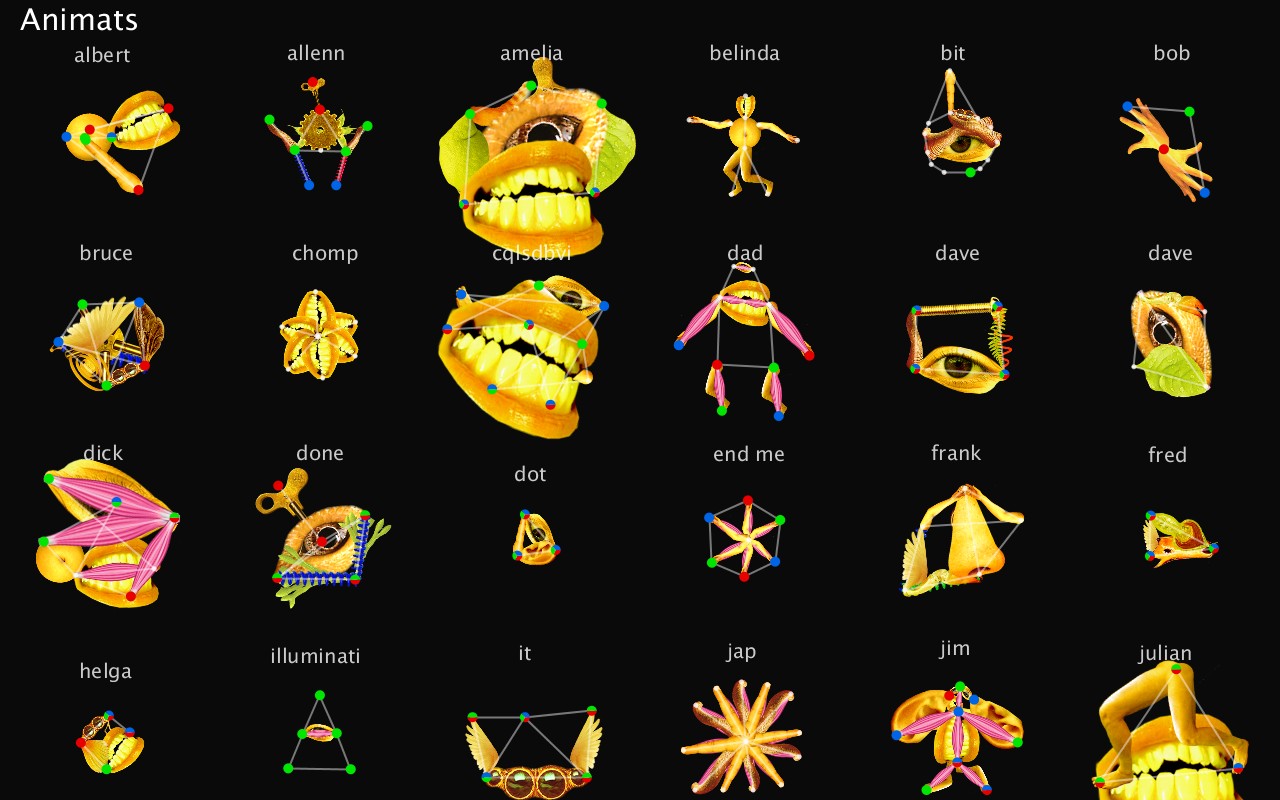
A superorganism is a big organism made up of smaller organisms. Superorganism art is a big piece of art made up of smaller pieces of art.
With readily available and easy to use digital tools, superorganism art dramatically expresses the powers of collaboration, communication, critical thinking and creativity.
We recently created a multiple projection piece with the participation of over two hundred 15-17 year olds as part of the UK's National Citizens Scheme which aims to give teenagers a range of skills to make them 'unstoppable' — like the way an ant colony conquers all before it, and an ant colony is a great example of a superorganism in nature. The workshops were run over 4 days in Canterbury, Kent and then we combined all the results together into a series of generative programs to be projected on a huge scale at a local art festival.
But where did this superorganism art idea come from?

For years we had been making interactive art with computers and sensors and projecting these works into group shows. We started thinking about how these artworks would interact when there was nobody in the space, as there is nothing sadder than interactive art with no audience. We were told to be careful that our projections and sounds did not leak over into another artist's personal space. And then we had enough of that — we decided to reverse this rule and worked with artists who deliberately bleed into and over each other. Artworks were designed to interact with artworks. Then you put the audience in the middle and see what happens. Nobody knows what will happen! Digital Art is particularly good at this — the outputs change in response to the inputs according to collections of behavioural algorithms and sensors positioned by the artists. Combine enough of this together and the resulting chaos can be thrilling to behold — and can develop a life of its own.
We started to think how we could get non-artists involved and designed a series of workshops where beginners could learn some creative coding and make small generative animations — unique to each person. Using the Processing language meant these could be taught almost instantaneously — in the space of an hour anyone can create something substantial with a rich variety of output over time. The next stage is to copy each person's code into a larger container program and then run all the code snippets at once in a shared space. By varying each workshop thematically we further enrich the output. For the Canterbury workshops we used the four elements EARTH, WATER, AIR and FIRE as starting points for people to experiment with.

Now as this is a Genetic Moo project we added in some digital creature design (ANIMATS) and some of our own artificial life forms (amongst them CORAL and TERMITES) to occupy the shared space and respond to the ever changing animations and a superorganism is born.
So, we have designed a system which allows people to make small parts which come together, combine, and emerge into a larger whole. All the while teaching how easy it is to make little steps in coding which can be combined into bigger steps which can make a dynamic and life like artwork. The possibilities are endless and we shall leave you with a young H.G.Wells's speculations on Early Experiments in Co-operation:
"The recent work undertaken by physiologists to investigate the behaviour of the peculiar corpuscles in the body, the phagocytes, lends colour to this vision. These strange unities wander through the body, here engorging bacteria, and there crowding at an inflamed spot or absorbing an obsolete structure. They have an appearance of far more initiative and freedom than a factory hand in the body politic. It is as startling and grotesque as it is scientifically true, that man is an aggregate of amoeboid individuals in a higher unity, and that such higher unities as may be reasonably likened to man, the Polyzoa individuals and the Ascidians, have united again into yet higher individual unities, and that, therefore, there is no impossibility in science that in the future men should not coalesce into similar unified aggregates. There can be no doubt that such phenomena as the now almost forgotten Siamese twins and double-headed monstrosities are tentative experiments on the part of Nature towards a 'colonial' grouping."